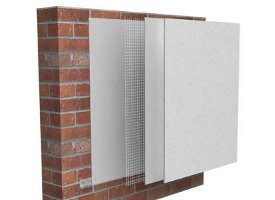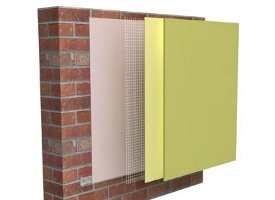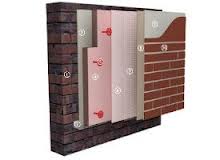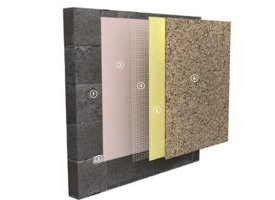External wall insulation products and insulated render systems
What type of insulation material and render should you choose?
If you think that your home requires a face lift or you simply want to repair the irregularities that you found on the external walls, rendering could be a solution. Between 30 and 35 percent of heat loss goes through the exterior walls. External wall insulation system functions as a thermal insulation barrier, protective layer and decorative façade. External wall insulation is covered with a waterproof layer to improve its properties and it can be made of polystyrene, mineral wool, polyurethane foam or phenolic foam, together with a reinforced cement based, mineral or synthetic plaster finish. Determining the right thickness of the insulation is done by calculating and referring to the Building Regulation Standards.
To prevent the accumulation of moisture in the exterior walls you need to apply a particular render system. Complete wall insulation has several benefits - it improves thermal performance, there is no risk of condensation, it provides good sound insulation, extends the life of the structure, it’s easy to maintain, plays an important role in the elimination of thermal bridges and can be done in several colors.
External wall insulation layer is between 50 - 100 mm but there are also boards up to 150 mm. Because the insulation is applied on the external walls thermal mass of the walls will absorb heat from the apartment which leads to a more even temperature over the entire heating cycle.
Regulations and permissions
Insulation is subject to building regulations and must meet minimum energy efficiency values. Permission is usually required if you are planning to change the external appearance of the house, especially if it protected as a cultural heritage site. Even if the changes in the external appearance of the house won’t be so massive, it is best to contact your local planning authority.
External wall insulation systems
One of the most often used form of insulation in buildings is polystyrene. It is a dense and lightweight material which is also a poor conductor of heat (that’s a good thing). It is made from petrochemicals as rigid boards or as loose fill. Its main advantages are a low price, resistance to moisture and good thermal insulation properties.
Phenolic insulation is a rigid insulating foam that has very good thermal insulating properties. Apart from wall insulation, It’s often used for insulating heating, ventilation and air conditioning systems, you can recognize it by their aluminum foil backing.
PIR boards are another commonly used insulation material. It is a very efficient and lightweight material with excellent thermal conductivity properties.
Rockwool slabs are another type of insulation material with a vapor resistivity similar to air. It’s breathable, fireproof and easy to install and use on external walls, with a compulsory complementary render system of choice.
Types of render systems
There are several types of insulated render systems, but they all must follow the standards set by Building Regulations. Some renders have different characteristics than the other. When you choosing the renders you should choose one that will best suit your home. Commonly used render systems are Silicone render, Mineral render, Polymer plain render, Polymer dashing render, Rendabrick, Acrilic and Silicate renders.
Silicone and Mineral renders are used as a finish in new buildings and re-modeling of the existing facades, and they are highly waterproof, vapor absorbent, impact proof and a good barrier against the elements. They are available with a rolled texture in a wide range of colors and are made entirely from natural materials.

![]()
Mineral render Silicone render
Polymer plain render is ideal for coating large areas and for generating decorative bands on building facades. It’s weather proof, durable and with anti-cracking properties.
Rendabrick is a high performance polymer cement render which can simulate the appearance of brickwork.



Polymer plain render Rendabrick Polymer dashing render
Polymer dashing render is available in seven standard colors, complemented by a wide choice of aggregate dash finishes. Fireproof and impact proof, it’s a quality substitute to cement and send renders.
Acrylic render's advantages are a high level of elasticity combined with a good breathability and a high resistance to atmospheric elements and impact damage.
Silicate render helps reduce the risk of damp and condensation by allowing the existing structure to breathe.
If you found this article to be helpful, please share it with your friends on Twitter, Facebook and Google+. If you have any questions or comments feel free to write them in the comment section below, I will respond to all of them.























































































































